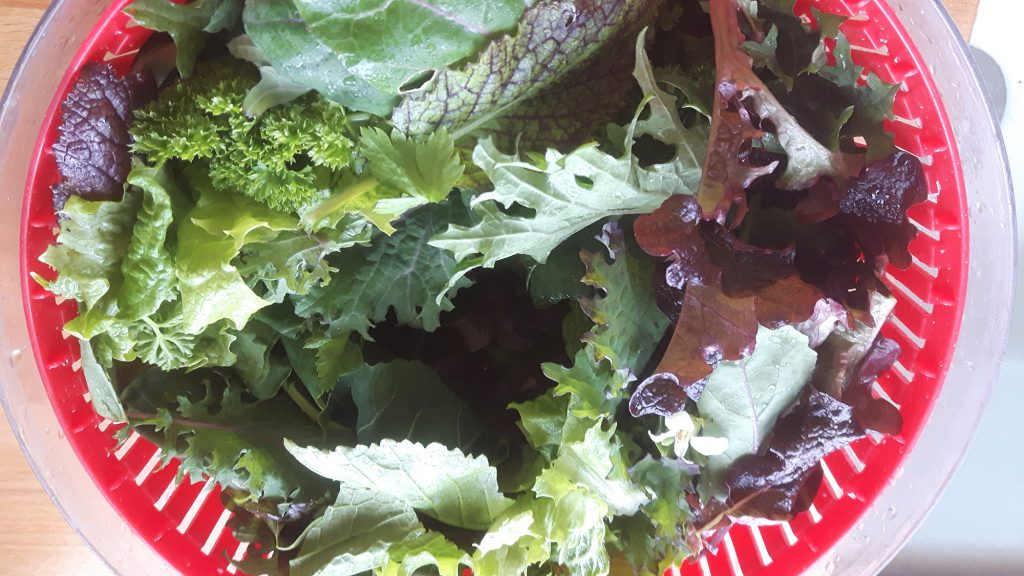Kim explains how to help counter the hungry gap by expanding your salad horizons with leaves from other plants currently growing.
If you looked at the average bag of unexciting supermarket salad mix, you’d be forgiven for assuming that all leaves had to look like this. Yet, you’re really missing a trick if that’s how you think it should always be. All year round, exciting pungent herbs, flowers and leaves can provide a welcome tasty and hardy addition.
With the emphasis on baby leaves from the hardy brassica family. Here’s a look at some of the best leaves available right now:

Flat leaf kale
You could also use small curly kale leaves, but personally I don’t like the texture unless they are cooked. The likes of Red Russian kale however is perfect. Just keep harvesting the larger leaves for cooking and use the small, tender baby leaves for dressing in salad. They make a delicious and antioxidant-rich, healthy addition.
Sprout leaves
Love them or hate them, this plant is such a useful winter staple to grow, but they are not all just about the er, sprout. The tops and leaves also have fine culinary potential in a range of dishes.
It’s actually worth leaving a few plants in the ground after you’ve harvested the main event, for the flurry of leaves that will appear as a result of the natural instinct to keep growing, set flower and seed drives on new growth as we head towards spring. The pretty yellow flowers eventually produced will attract a range of beneficial pollinators, and are themselves edible and very attractive when added to food.
Beetroot leaf
I use this as a colourful addition to salad all year round as it works so well. Simply leave a few roots in the ground and keep harvesting to encourage new leaf growth. Come the hungry gap in early spring, such wider edibles particularly come into their own.
Parsley
One of my favourite herbs for sure, this plant has the ability to stand firm against the cold over winter and even to put on slow growth if positioned in a sheltered or covered spot. Its vitamin C-packed-leaves make an especially welcome addition to food, and if you can it’s worth bringing any plants you have growing inside to ensure more regular pickings at this time of year. Cut up small the leaves also work really well raw as a garnish or salad staple.
Pea shoots
Although you don’t want to go crazy harvesting from any overwintered pea plants, certainly there’s no harm in picking off a few shoots here and there. If you like the flavour and texture, it’s worth sprouting some inside, in a warm, sunny spot for a welcome winter supply suitable for more regular pickings.
Oriental greens
Another popular staple once you get started growing them, this wide variety of greens are very versatile and hardy at this time of year. Again, it’s the baby leaves you want for salad, not the tougher thick stemmed adult leaves which benefit from a bit of cooking to make them more palatable. Choose from mustard greens, mizuna and mibuna, as well as pak choi and Chinese cabbage if growing under some form of cover.
Swiss chard and spinach
Both lovely very hardy leaves which are readily available. Do also leave some in the ground for a flurry of new growth come spring.
Broccoli
Whilst not grown for their leaves, these plants have tender stems well worth utilising in the kitchen.
Dandelion leaves
There are so many reasons for letting this much maligned weed grow in a controlled way on your veg patch. As well as providing a most valuable source of nectar for bees early in the season, most of the plant is also edible to boot. Yes, it has a slightly bitter taste but the small, young leaves can be added to salad for an interesting flavour addition, as can the flower petals.
A version of this article first appeared in the February issue of Grow Your Own magazine.
